In the NBA's cosmic ballet, coaches are always looking for counters

The first few weeks of the NBA season are always noteworthy to see which players have emerged with new facets to their games, but players aren’t the only ones at work all summer. Coaches finally have a chance to get in the lab, catch up on trends around the league, devise new counters, and then counters to those counters. Across the NBA, the cosmic ballet goes on, and we’re seeing some really interesting stuff this year to defuse well-established strategies on both sides of the ball.
Melting the Ice
First popularized in the 1990s, the concept of “icing” (also known as “downing” or “bluing”) side pick-and-rolls to the baseline has reached its zenith in the past few years. By keeping ballhandlers on one side of the floor, defenses can limit their passing angles.
On pick-and-rolls where the ball gets to the middle, the handler forces help from the weak side because he has a clear lane to the basket. At the same time, he has a shorter pass to anywhere on the floor to exploit that help. Worse, on side pick-and-rolls to the middle, the screener can go baseline, which is a much farther distance for help defenders to travel. Some of the more iconic dunks of the last few years have come on side pick-and-rolls for this reason.
The stats, expertly compiled by John Schumann of NBA.com, show how much more effective icing pick-and-rolls can be. Many teams have even adopted the tactic of keeping the ballhandler to one side of the floor on pick-and-rolls originating closer to the middle of the floor.
Now teams have begun to exploit this coverage by setting their screens much higher on the floor on the baseline side of the defender. Because the defender’s first job is the keep the handler out of the middle, he allows the offensive player to pick up direct-line speed. Few if any bigs are comfortable containing the ball so far out on the floor, so a good screen gives the handler an automatic midrange jumper. Better athletes are allowed a running start to attack the big one-on-one with little resistance.
A good screen is far more likely in this scenario, because the defender does not really have the option of going under the screen as on a conventional pick-and-roll; he would be taking himself completely out of the play. What’s more, it is much harder for the defender to recover after the screen when it frees the ballhandler on a near direct line to the hoop, as opposed to when the play is moving laterally. The ballhandler can open up a lot more distance at full speed in a straight line compared to having to turn the corner. He can also “snake” to the middle of the floor, rendering help far more difficult.

This tactic is no panacea, as starting each pick-and-roll so high on the floor is impractical. But in late-game situations with a star like LeBron James, it is possible to use the defense’s tactics against them.
Dummy Drives
Using dummy drives to set up another action is nothing new, as long-time Spurs watchers know.
But as that action has proliferated throughout the league’s defensive consciousness, coaches have grown increasingly creative with their application of sets that use designed drives to set up the action elsewhere. Check out this slick late-game play from the Hawks’ Mike Budenholzer. Al Horford starts on the block but is on his way to the corner for a three the moment Paul Millsap starts his drive — clearly a designed action to get a three with the Hawks down four.
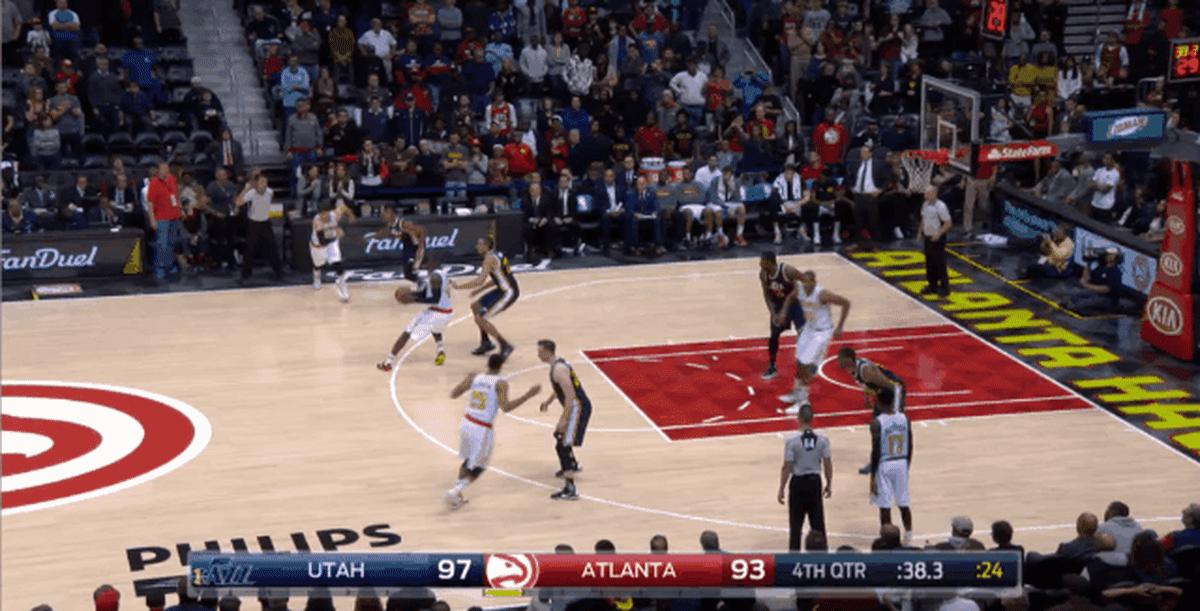
The reason these plays work is that set plays have rarely depended on an action, such as a drive, that is not certain to work. But with NBA schemes increasingly designed to funnel drivers into designated help areas, look for offenses to take advantage by activating the help via dummy drives to set up other, juicier actions.
Screening the Help
Disrupting the help defense has long been a hidden part of the league; master practitioners like Andrew Bogut still get away with little holds on help defenders rotating over.
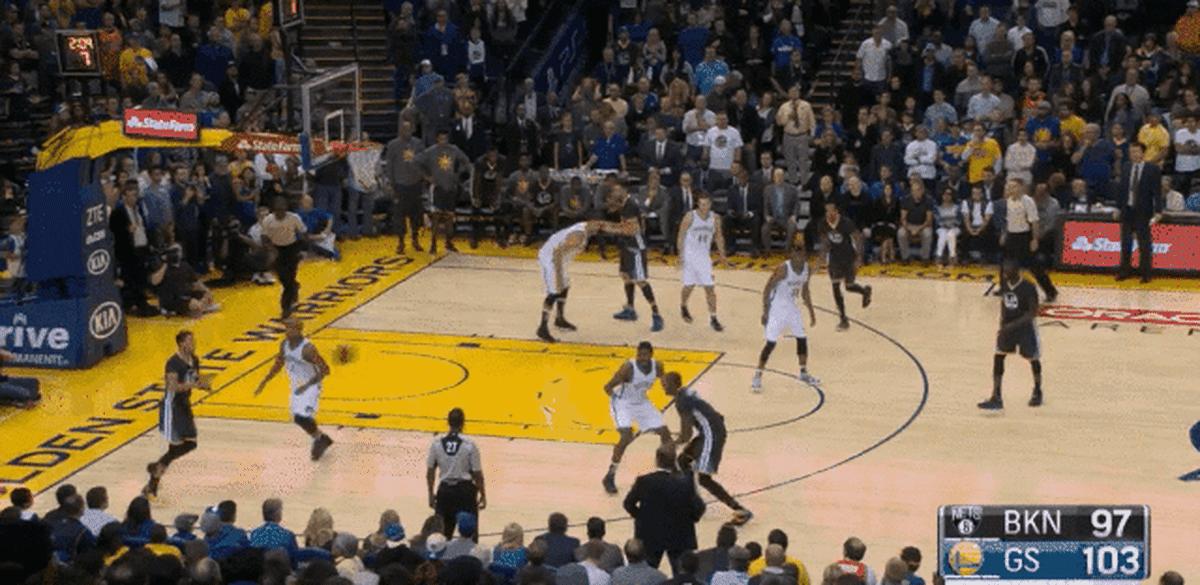
But the next frontier is adjusting screening to one’s own man, legally, in situations where help is called for. Watch Draymond Green set up a three by taking out his own man, Danilo Gallinari, rather than trying to screen Stephen Curry’s hopelessly beaten marker.
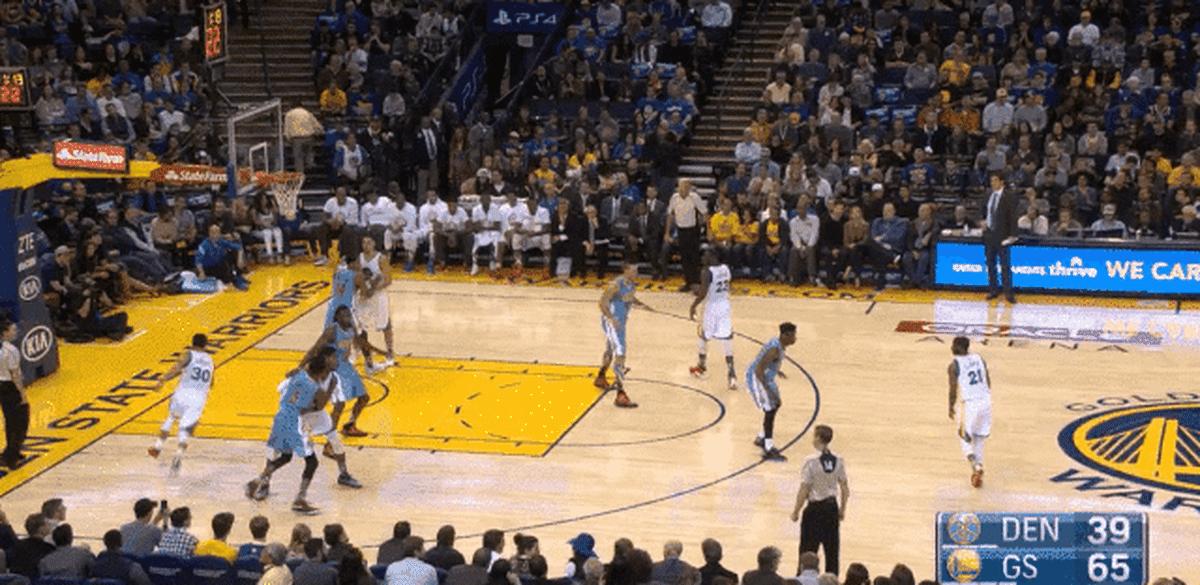
This action by Green was improvised, but even teams that aren’t that smart off the cuff could utilize this action. In particular, teams could benefit by having bigs not involved in the pick-and-roll intentionally disrupt weakside help defenders via fake post-ups or boxouts, preventing their own man from reacting to a roll down the lane.
Abandoning the “Dunker” Spot
The Milwaukee Bucks have a lot of talented individual players who can attack off the bounce, but a relative dearth of shooters. Bigs John Henson and Greg Monroe have little range outside the basket area, often gumming up the works for Milwaukee’s drivers. But the Bucks have introduced a clever wrinkle to free up their bigs on drives. Normally, low-range bigs are directed to hang out on the baseline in the “dunker” position until a drive occurs. But that allows their man to react to the ball along the axis from the “dunker,” complicating a potential pass. Help defenders can also easily sink down to that position.
But armed with bigs who are capable of taking a dribble to the basket, Milwaukee has on occasion stationed its bigs at the elbow on penetration. When the driver forces the big’s man to help, he is able to drop it off to Monroe or Henson on the move, allowing them a head of steam on the way to the basket as the help defender must react a second time.
Driving the Front on Switches
We’ve all seen the possession before. Your team runs a pick-and-roll, the defense switches, and the offense kills 15 seconds fruitlessly trying to enter the ball to the big who is being fronted, until the possession devolves into a bad midrange jumper.
When the post is fronted, players are often told to drive the front, meaning driving directly at the fronted post player. Usually driving into a player trying to post up is worthless because of the lack of spacing, but a fronting defender is out of position to help, pinned outside of the big.
After a switch, this tactic is doubly effective. The driver is either defended by a big (whom he can more easily drive past) or one of the bigs is outside the paint, as Luis Scola is here after a switch on Goran Dragic.
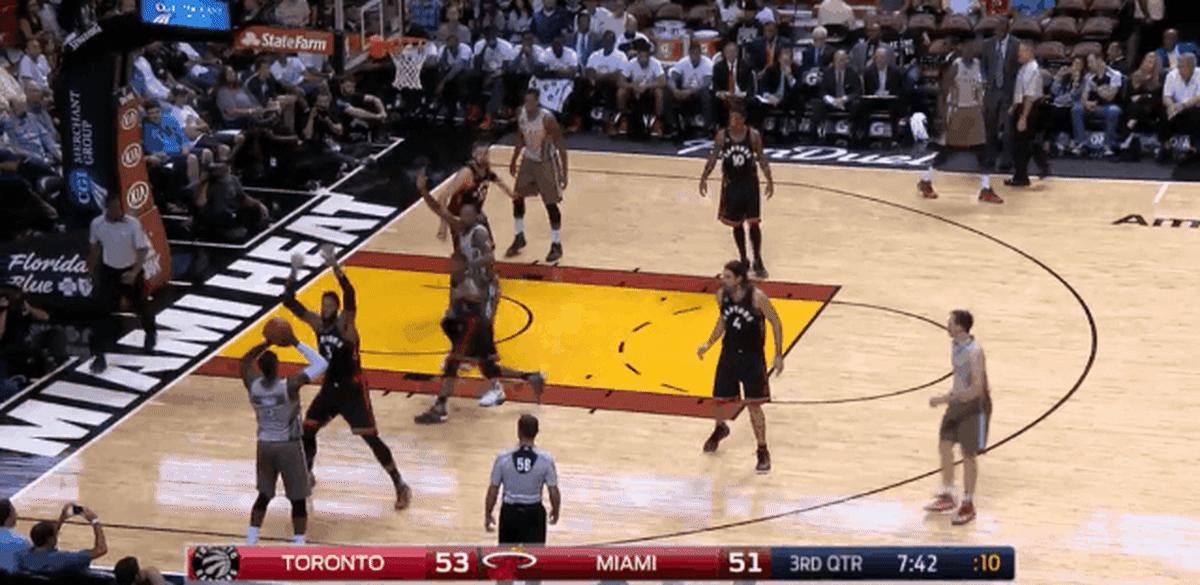
Fronting Chris Bosh, Kyle Lowry is hard-pressed to help on Wade — though he tries admirably — and Wade’s drive delivers a wide open corner three for Luol Deng. With switches becoming ever more prevalent, driving the front is a more efficient tactic than a ponderous attempt to enter the ball into the post. It also leaves the fronted big in excellent offensive rebound position on a miss.
Trapping Time-Wasters
Teams with the lead in the last few minutes of the game are often criticized for playing slowdown, isolation basketball. While these plays yield fewer buckets, they serve the purpose of wasting as much time as possible with a low risk of a turnover. But defenses are starting to realize that when the opposition’s goal is to waste time, trapping becomes a much lower-risk proposition because of the offense’s reluctance to attack.
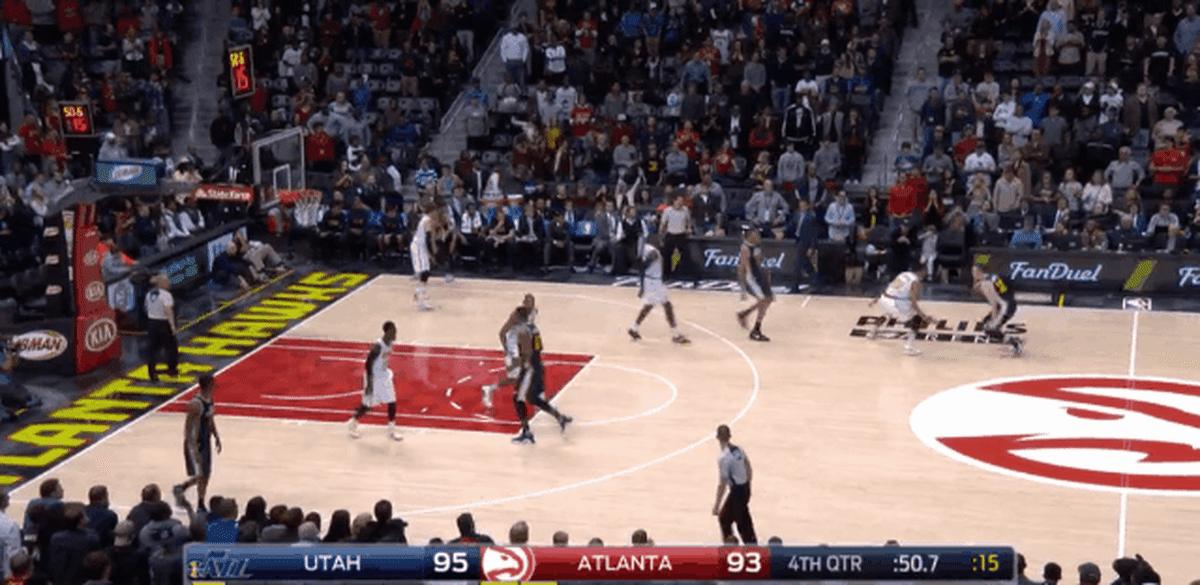
With Utah in time-wasting mode, there isn’t much downside to the Hawks trapping here. Gordon Hayward barely escapes by using a timeout, Utah’s last. Denying the ball inbounds in such situations (before the tactic becomes obvious when trailing with the shot clock off) is another strategy increasingly employed by smart teams.

